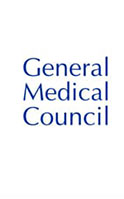Laparoscopic Surgery
Hysterectomy
Hysterectomy is a surgical method in which the uterus of a woman is removed. Sometimes, the ovaries and fallopian tubes are also removed.
A laparoscopic supracervical hysterectomy (LH) is a minimally invasive procedure, which involves removal of the uterus while keeping the cervix intact. The cervix is the lower narrow end of the womb. Once a woman has had a hysterectomy, she will no longer menstruate and cannot become pregnant.
The uterus also referred to as the womb, is where a baby grows inside their mother.
Once a woman has had a hysterectomy, she will no longer menstruate and cannot become pregnant.
Indications
Your doctor may suggest you undergo a hysterectomy if you have the following conditions:
- Uterine fibroids
- Endometriosis not cured by medicine or surgery
- Uterine prolapse - when the uterus descends into the vagina
- Cancer of the uterus, cervix, or ovaries
- Vaginal bleeding that continues despite treatment
- Chronic pelvic pain
Diagnosis
Your doctor will recommend you have the following tests before having a hysterectomy:
Pelvic ultrasound: It is an advanced imaging test that uses high-frequency sound waves to create pictures of the female pelvic organs.
Pap smear: This is a test that involves collection and sampling of cervical cells to detect cervical cancer.
Endometrial biopsy: It is a procedure that involves sampling of the cells lining the uterus (endometrium) for any abnormalities.
Surgery
The procedure is usually performed with the patient under general anaesthesia.
Your surgeon will make a few small incisions on the abdomen in or around the belly button. A laparoscope, a thin instrument with a light and camera at the tip is inserted through one of these incisions. The images from the camera are displayed on a monitor to help the surgeon view the internal pelvic organs.
Small surgical instruments are inserted through the other abdominal incisions made. The soft tissues are retracted to gain access to the uterus. The surgeon detaches the ligaments, tissues, and blood vessels surrounding the uterus. The uterus is then removed in pieces through the tiny incision leaving the cervix intact. The ovaries and fallopian tubes may or may not be removed depending on the patient and the surgeon’s preference. At the end of the procedure, the incisions are closed and a sterile dressing is placed over the incisional areas.
The Advantages of Minimally Invasive Surgery
Over the open traditional “open” incision include:
- Smaller incisions
- Minimal soft tissue trauma
- Less post-operative pain
- Faster healing time
- Lower infection rate
- Less scarring
- Usually performed as outpatient day surgery
Post-operative Care
Your recovery depends on the type of surgery performed and the progress of your healing. Following are the post-surgical guidelines:
- You will be prescribed pain medications to keep you comfortable and antibiotics to prevent infection.
- You will be instructed to get adequate rest and avoid heavy lifting after your surgery.
- You can continue normal activities once the pain, bleeding, and abdominal pressure has resolved.
- Sexual activity can be resumed about six weeks following surgery.
- Exercises should be avoided until 3 weeks after surgery.
Risks and Complications
Most women recover without any complications from the surgery. However, Risks and Complications associated with Hysterectomy surgery can include the following:
- Infection
- Bleeding
- Blood clots
- Urinary incontinence: loss of bladder control
- Vaginal prolapse: a condition in which the vagina protrudes from the vaginal opening.
- Chronic pain
- Bladder or ureter injury
- Painful intercourse
- Early menopause if ovaries were removed
Call your doctor if you experience any of the following signs:
- Heavy vaginal bleeding
- Pain, redness, swelling, or discharge around the incisions
- Fever over 101° F
- Nausea and vomiting
- Shortness of breath







